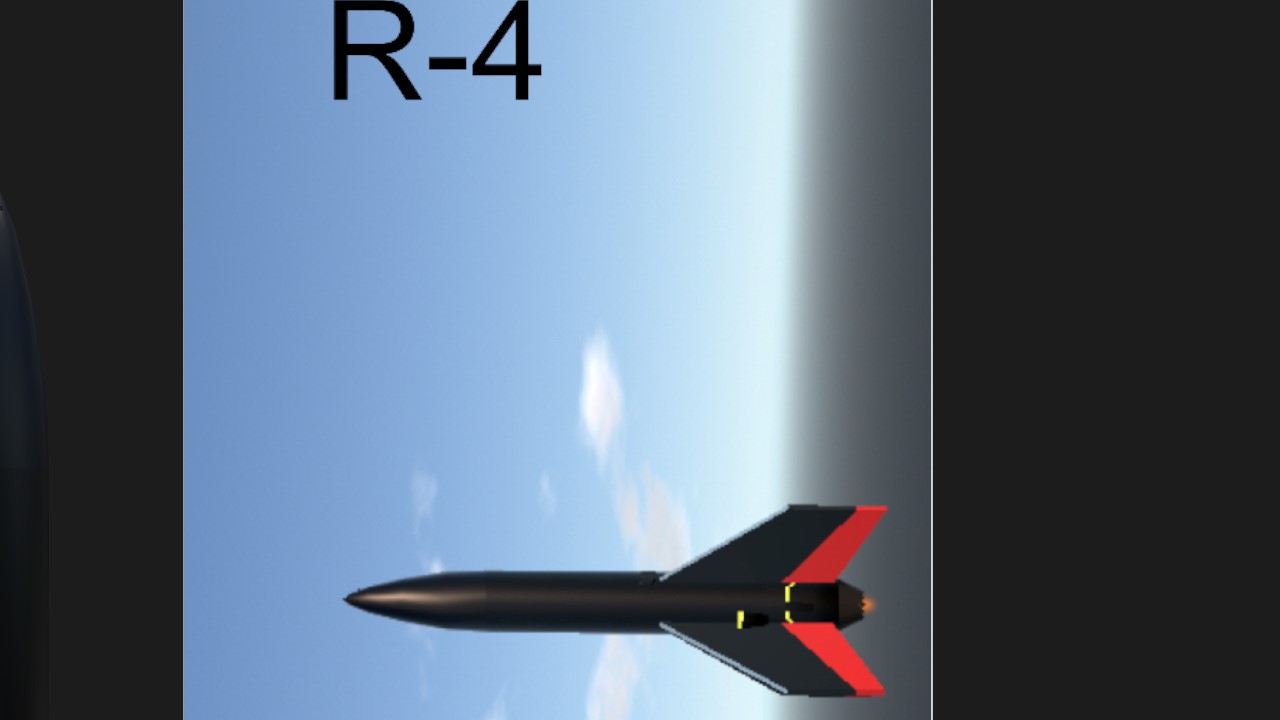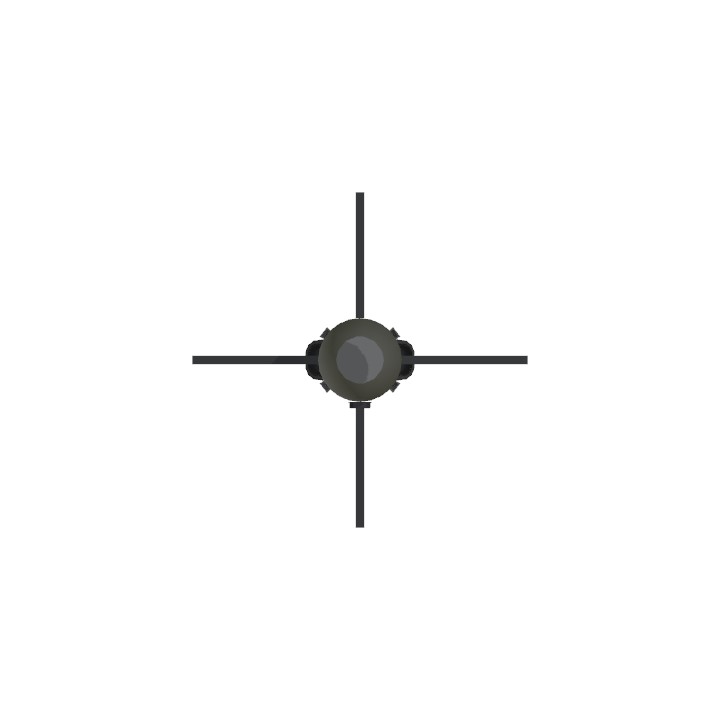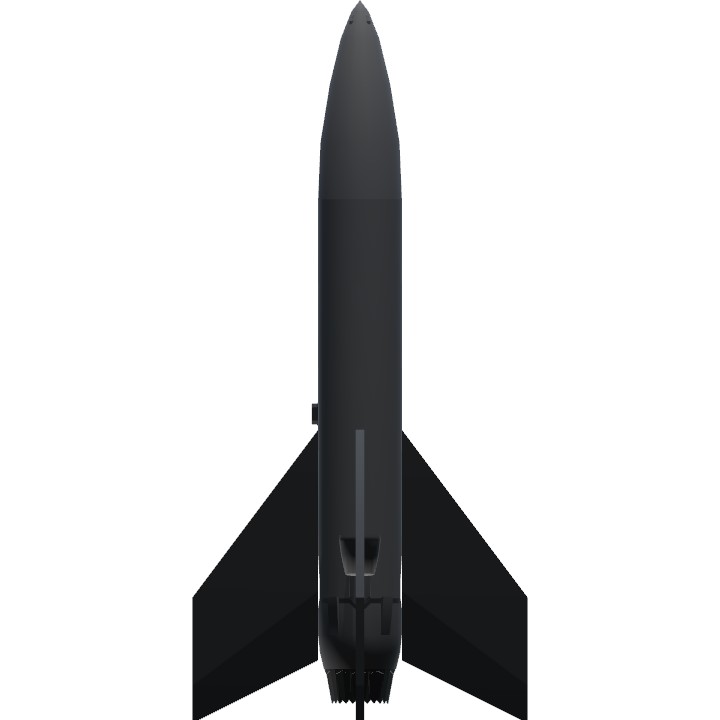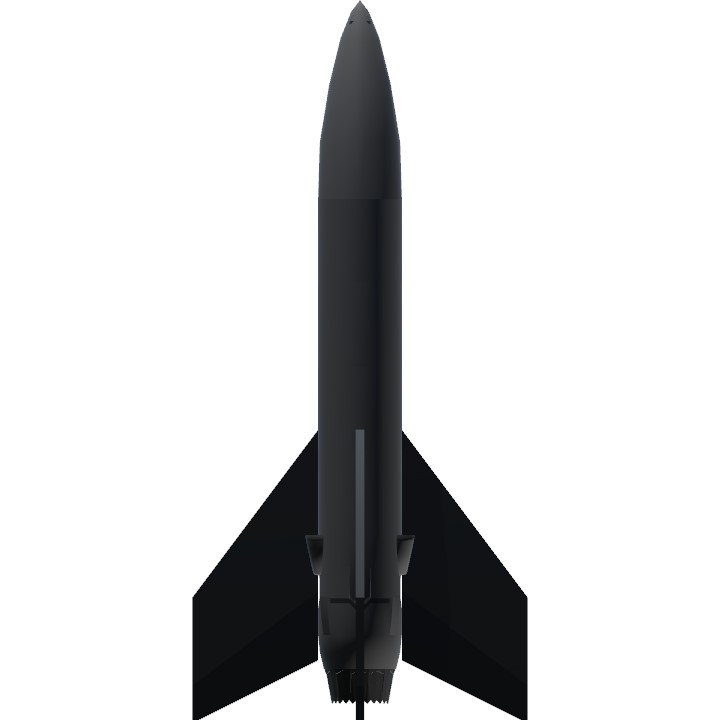Basically a V2. I don’t know how to limit the altitude. Purchaseable as a base for a ballistic missile.
Specifications
General Characteristics
- Created On iOS
- Wingspan 12.9ft (3.9m)
- Length 12.9ft (3.9m)
- Height 28.2ft (8.6m)
- Empty Weight 4,818lbs (2,185kg)
- Loaded Weight 5,158lbs (2,339kg)
Performance
- Power/Weight Ratio 6.535
- Wing Loading 37.6lbs/ft2 (183.5kg/m2)
- Wing Area 137.2ft2 (12.8m2)
- Drag Points 5173
Parts
- Number of Parts 14
- Control Surfaces 4
- Performance Cost 119





@AviationLoverGEEK444 that was a reporter. It’s classified. Our first major launch is set to take place on July twenty fourth in 1949.
@RB107 ITS LITTERALY A V2
first
(pls pin ;-;)
@Technicalstrat I have no idea
@GEM78 why?
The V2 (German: Vergeltungswaffe 2, lit. 'Vengeance Weapon 2'), with the technical name Aggregat-4 (A4), was the world's first long-range[4] guided ballistic missile. The missile, powered by a liquid-propellant rocket engine, was developed during the Second World War in Nazi Germany as a "vengeance weapon" and assigned to attack Allied cities as retaliation for the Allied bombings of German cities. The V2 rocket also became the first artificial object to travel into space by crossing the Kármán line (edge of space) with the vertical launch of MW 18014 on 20 June 1944.[5]
ok hold up I'm going to summon the 1st portion of the V2 wikipedia
@AeroTactical I got a rocket ship, already, since 1944 accualy
@AeroTactical whatever one made it go down
@AviationLoverGEEK444 1?
@AeroTactical but it doesn’t stop unless you hit the AG SOMTHING
@AviationLoverGEEK444 of a ballistic missile like the R-4 (V2)
@AeroTactical too early 1960 when it is actually possible
@DeeganishCountryball don’t you agree?
@AviationLoverGEEK444 in will try.
@AviationLoverGEEK444 in will try.
@AeroTactical for a weapon, not supposed to go into the atmosphere right?
@RB107 yah but before he said he was first into space
@RB107 yah but not launching in 1946
@RB107 I am calling it a rocket.
@AeroTactical Then why you said it in description and answer 'yeah' to @DeeganWithABazooka's question?
@AeroTactical Then explain the description
@DeeganWithABazooka @DeeganWithABazooka @RB107 I don’t mean it to go to space.
@RB107 This argument cannot be beaten...
@AeroTactical German V-2 rocket even without its warhead, could not reach outer space as defined by the Kármán line (100 km altitude).
.
V-2 was designed as a ballistic missile, not a space launch vehicle. With a standard warhead (about 1,000 kg), it reached a maximum altitude of around 80-90 km on a vertical flight. Removing the warhead would reduce its weight, increasing altitude somewhat, but not enough to cross the 100 km threshold.
.
V-2's single-stage liquid-fuel engine provided a specific impulse of about 239 seconds and a total burn time of around 65 seconds. This was insufficient to achieve the velocity needed for orbital or suborbital spaceflight (approximately 7.9 km/s for low Earth orbit). Even without a payload, V2 rocket's maximum velocity was around 1.6 km/s.
.
V-2 lacked the structural design and guidance systems for stable flight beyond its intended suborbital trajectory. Its fins and gyroscopic stabilization were optimized for atmospheric flight, not the vacuum of space.
.
While V-2 was a groundbreaking technology, it was not a space rocket. Post-WWII, modified V-2s used in U.S. experiments (e.g., Project Bumper) reached altitudes up to 400 km by adding upper stages, but the base V-2 alone couldn’t achieve this.
.
In short, a V-2 without its warhead could fly higher than its standard configuration but still lacked the power, design, and velocity to reach outer space.
.
Thats my argument.
@DeeganWithABazooka
@AviationLoverGEEK444
@AviationLoverGEEK444 I agree